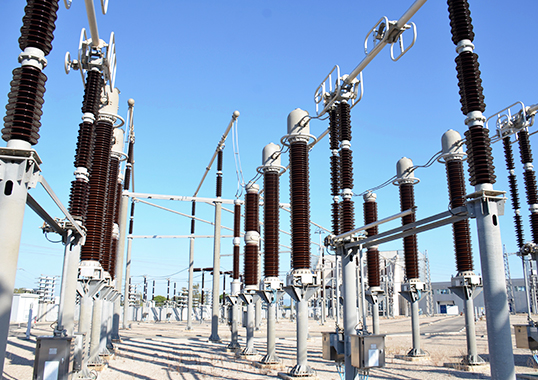
How to Select Post Insulators for Disconnectors and Substations
2023-11-03 00:09Many factors have to be considered when attempting to optimize choice and sizing of insulators for substation applications. These include mechanical, electrical, environmental, functional and economic considerations.
This edited past contribution to INMR by Marco Nosilati and Davide Momesso of GE Grid Solutions in Italy, in co-operation with independent expert, Alberto Pigini, analyzed different technical parameters for optimized selection of post insulators, with focus on EHV and UHV disconnectors.

An insulator is defined as: "a device intended for electrical insulation and mechanical fixing of equipment or conductors which are subject to electric potential differences". This is a highly generalized definition inasmuch as there are many types of post insulators used at substations and converter stations, depending on application, e.g. bus supports smoothing reactor supports, switchgear, busbars, etc. A disconnector is "a mechanical switching device which provides, in the open position, an isolating distance in accordance with specified requirements". The requirements to be respected for disconnector devices in open-air applications are many but can be divided into three main classes:
• Functional & Electrical Requirements
The main function of disconnector is to guarantee safety. In the open condition, it therefore has to grant a visible and reliable open gap; in a closed condition, it must withstand normal and fault current without interruption or abnormal unsafe situations. A disconnector also has to be designed to avoid discharges across the open-air gap and to earth.
• Mechanical Requirements
From the mechanical point of view, in addition to its own operating loads (weight, operational requirements), the disconnector also has to bear external loads. On UHV equipment, the most severe of these is earthquake. A highly precise design must therefore be achieved if there are seismic requirements. Other loads to also be considered are short-circuit, high wind and terminal loads.
• Environmental Requirements
Being exposed to open air, disconnectors have to withstand all possible environmental factors, including severe ice (important since this can completely change performance of insulators) and heavy rain (which enhances discharge risk). Above all is impact of pollution, which is a key dimensioning factor for insulators and can lead to discharge to earth.
Since all these requirements link closely to insulator performance, post insulators are one of the most important components of a disconnector. At the same time, additional requirements link to displacement under load in service, meaning that disconnectors have one more critical issue to deal with compared to other equipment, namely movement of the mechanical parts necessary for opening and closing. As such, a certain level of rigidity is necessary for proper function of this equipment.
There is a general goal in the electricity supply industry of achieving compact, cost-effective open-air substations. Station post insulator technology can contribute to this goal by limiting necessary arcing distances for busbars, disconnectors and other apparatus. This can be achieved by optimizing post insulator design through selecting the most suitable materials, improving mechanical strength and stiffness, reducing number of stacks and intermediate flanges as well as optimizing shed profile and creepage factor. In regard to UHV applications, the main challenge for post insulators relates to height, particularly since the pollution environment often requires long creepage distances. Mechanical requirements from bending and torsion loads only serve to make this challenge more complex and can also significantly increase the difficulty of manufacturing such units.
PS:Article from inmr selecting post insulators for disconnectors.
